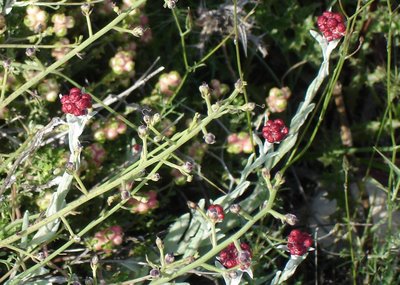Memorial Day
This post ran originally on May 1, 2006.
The deep crimson flower above has many names: red everlasting, cudweed, Helichrysum sanguineum. In Hebrew it is called dam ha-maccabim—blood of the Maccabees.
This is the flower that symbolizes the memorial day for Israel’s fallen soldiers and victims of terror attacks. On this day, which started just a few hours ago and which will end tomorrow night—ushering in the festivities of Independence Day—many people wear special stickers bearing an image of this flower and the Hebrew word nizkor—“We will remember.”
Last week we remembered the millions of Jews who were murdered before they could reach these shores. Today we remember those who paid the ultimate price for our ability to live here as free human beings and as Jews.
Actually, we always remember. Not a day goes by that we do not. But most of the time it is a private remembrance. Today it is a shared, public one.
Here are two of the people I remember:
Rafi, a young man from the Netherlands who was in the midst of his conversion process when I met him in the Sar-El volunteer program in 1991. He was killed in a terrorist drive-by shooting the day after Shavuot in 1994, only three months after he had been married, on his way back from a vacation with his wife at a Gush Katif hotel. One of the medics who tried to resuscitate Rafi recalled that the marks of his tefillin were still visible on his arm when he died. I was listening to the radio when the news broke, but because Rafi had changed his surname since we had last met, I didn’t realize he was the one who had been murdered until I saw his photograph on the front page of the newspaper the next morning. One of the last times I saw Rafi was at the annual Yom ha-Shoah memorial service at Yad Vashem. I was there with my ulpan class; he was there in IDF uniform as a Sar-El volunteer.
Sara, a member of my women’s tefilla group and the first of us to take a stand on wearing a tallit during our services. At her urging we held an evening of learning and debate about the issue. Well into the evening, Sara told us that she had to leave a little early because she was going on a trip to Petra with her fiancé early the following morning. We said goodbye and wished her a good trip. The next morning, the No. 18 bus on which Sara and her fiancé were traveling was blown up by a terrorist. It was February 1996. They had planned to go to Petra; they never even made it to the Central Bus Station.
Some years ago I learned that the essential oil of the helichrysum plant heals hurts and bruises. Since then I have wondered whether that might, on some level, however unconscious, have anything at all to do with the fact that this flower was chosen as the symbol of one of the most painful days in our calendar.
We go on... but we always remember.

No comments:
Post a Comment
Comments are moderated. If you're a spammer, don't waste your keystrokes. If you're a real, honest-to-goodness commenter, welcome!